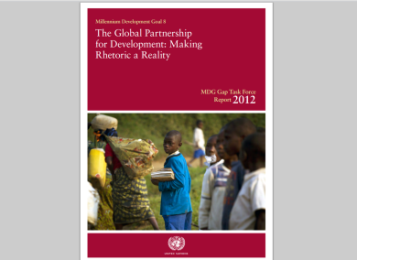On 20 September 2012, the United Nations Secretariat published the "2012 MDG Gap Task Force Report". The report stresses the importance of accessibility of new technologies for disaster risk reduction: "Affordable access to new technologies for climate change mitigation and adaptation and disaster risk management have also become pressing priorities. (...) The risk of natural disasters continues to increase in both developed and developing countries. Making further progress in reducing and managing risk will require, inter alia, better and more systematic recording of disaster losses and impacts, and the institutionalization of national disaster inventory systems. Most countries currently lack such systems."
UNISDR (United Nations International Strategy for Disaster Reduction) chief, Margareta Wahlström, today welcomed the focus on the importance of systematic recording of disaster losses and impacts contained in the report. Ms. Wahlström said: "Access to information is critical to successful disaster risk management. You cannot manage what you cannot measure. The 43 countries which have established and institutionalized national disaster loss data bases are leading the way when it comes to a coherent and targeted response to investment in resilient infrastructure."
The MDG Gap Task Force was created by the Secretary-General of the United Nations in May 2007 to improve monitoring of the global commitments contained in MDG 8, the Global Partnership for Development. The main purpose of the Task Force is to systematically track existing international commitments and to identify gaps and obstacles in their fulfillment at the international, regional and country level in the areas of official development assistance, market access (trade), debt sustainability, access to essential medicines and new technologies. The Task Force integrates more than 20 UN and other international agencies. An annual report of the MDG Gap Task Force is published in September.

